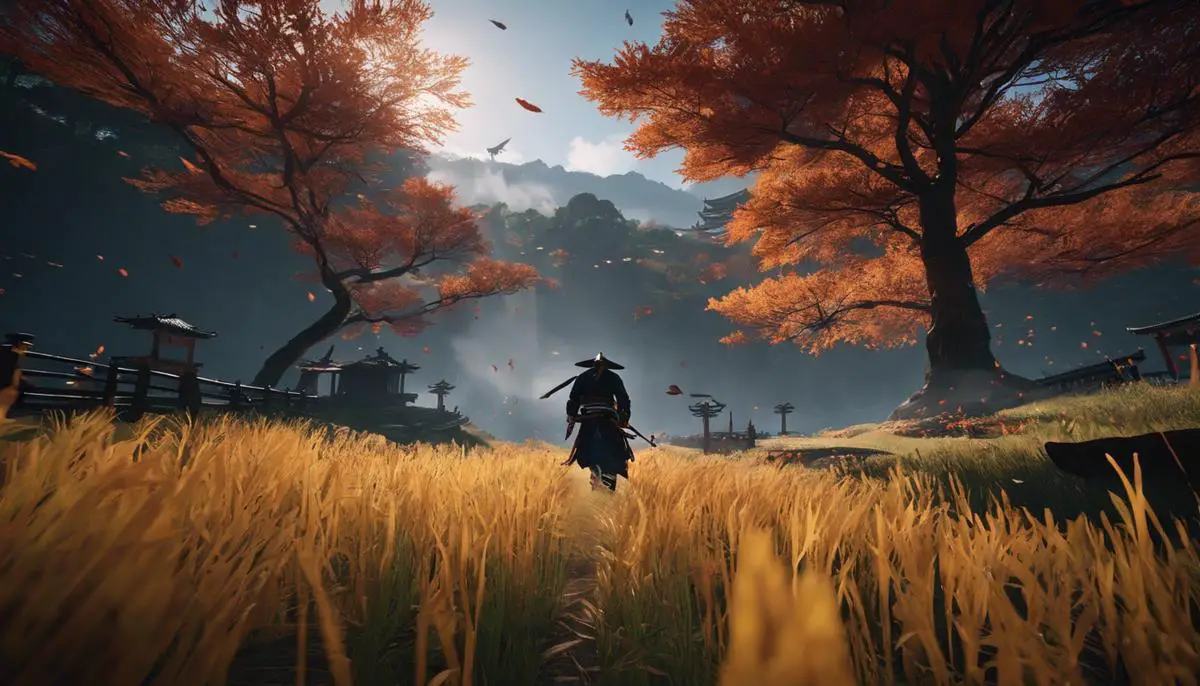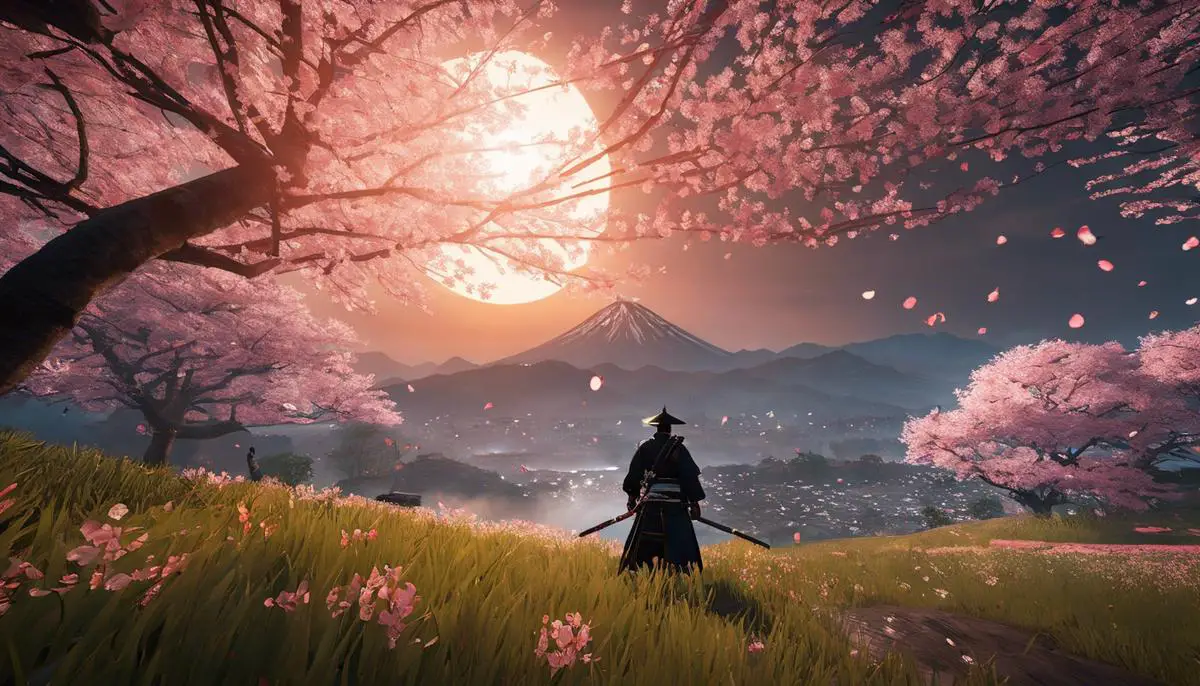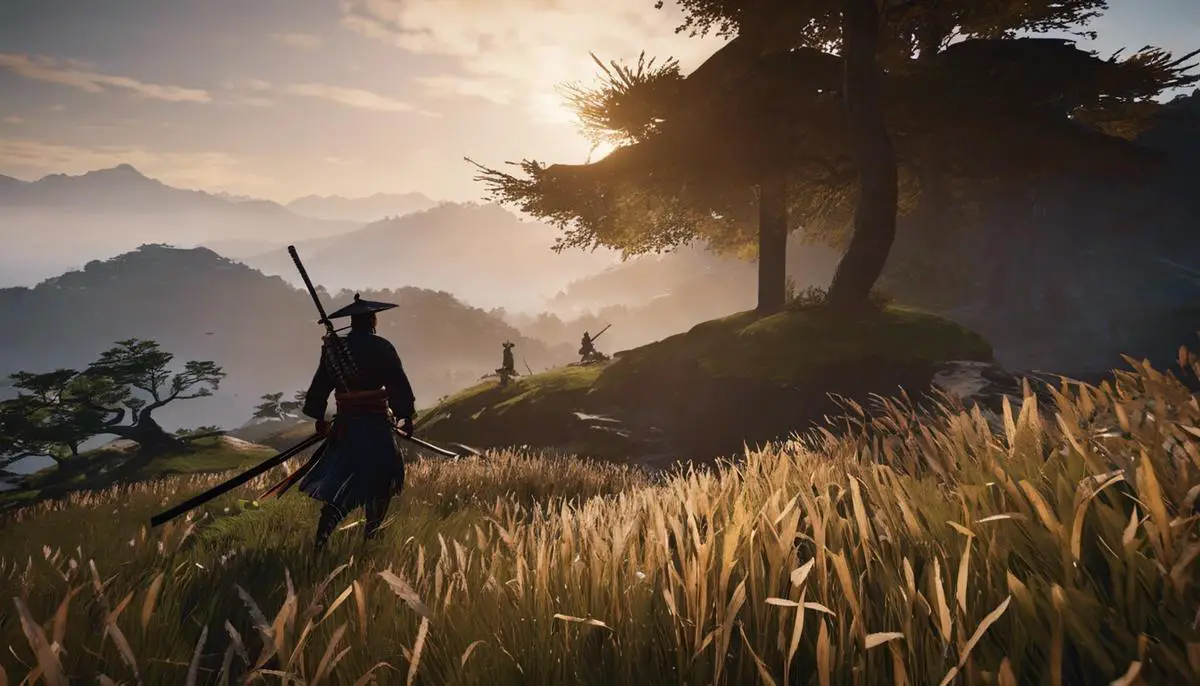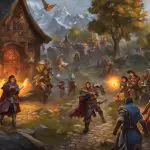Embarking on the epic journey within the lush and storied landscapes of Ghost of Tsushima, players are often faced with a crucial choice: to immerse themselves in the game’s rich narrative through cutscenes or to focus squarely on the heart-pounding action by skipping over these story-driven interludes. As the player, understanding the cutscene skipping mechanics becomes a pivotal aspect of tailoring your gaming experience. This exploration will equip you with knowledge of the in-game controls and options that facilitate the skipping or fast-forwarding of cutscenes, while also delving into the delicate balance between preserving the game’s intended narrative flow and personalizing your path through its samurai saga.
Cutscene Skipping Mechanics
Quick Guide to Skipping Cutscenes in Ghost of Tsushima
Are cutscenes interrupting your flow in Ghost of Tsushima? Here’s how to get right back into the action.
Ghost of Tsushima is a masterpiece of storytelling and breathtaking visuals, but there comes a time when even the most invested players want to skip a cutscene. Whether you’re replaying the game or just eager to jump back into combat, it’s essential to know how to bypass these cinematic interludes.
Fortunately, Sucker Punch Productions has given players the ability to skip cutscenes in Ghost of Tsushima. Here’s how:
- As soon as a cutscene begins, keep an eye on the bottom right corner of the screen.
- Look for the “Pause” prompt to appear – this will happen only after the initial fade-in completes, and the scene is in full swing.
- Press the “Options” button on your PlayStation controller – the large, central button on the right side of the touchpad.
- After pressing “Options,” you’ll see the “Skip” option overlay on the bottom right of the screen.
- Select “Skip” by pressing the “X” button, and confirm your decision if prompted.
- The game will immediately bypass the remainder of the cutscene, plunging you back into gameplay.
Remember, this feature is designed to give players flexibility, but use it wisely. Cutscenes in Ghost of Tsushima not only convey critical story points but also immerse you in its rich narrative. Skipping too many scenes can leave you disjointed from the game’s powerful storyline and lessen the overall experience.
So, when you’re ready to blaze through cutscenes and carve your path through feudal Japan with minimal interruption, now you know exactly what to do – strike fast, and get back in the game.

Game Design and Narrative Flow
Shifting focus from the logistics of cutscene-skipping, let’s delve into the crux of the matter – the potential impacts of breezing past these narrative interludes in Ghost of Tsushima. It’s all about the delicate balance between narrative depth and gameplay fluidity.
Firstly, Ghost of Tsushima isn’t merely a visual feast; it’s a narrative-driven experience where the emotional journey of Jin Sakai is as crucial as the swordplay. Skimming over cutscenes can equate to glossing over chapters in a book, leaving the story arc fragmented. You might miss key plot developments, character motivations, or emotional beats that add layers to Jin’s transformation from a samurai to the feared Ghost.
Moreover, Sucker Punch, the studio behind this masterpiece, has intricately woven cultural authenticity into each scene. The cutscenes are not just about pushing the storyline; they serve to immerse players in the game’s historical context, showcasing the rich tapestry of feudal Japan and the samurai code. Skipping could mean a missed opportunity to connect with the game’s cultural underpinnings and lesser appreciation for the developers’ meticulous attention to detail.
Let’s not forget that Ghost of Tsushima employs cutscenes to relay critical game mechanics or introduce new gameplay elements. Bypassing these could leave players bewildered during crucial battles or when utilizing new skills. In essence, cutscenes double as an unobtrusive tutorial that’s integral for strategic progression.
The game’s pacing is also carefully calibrated. In the midst of adrenaline-pumping action, cutscenes act as a breather, allowing players to process previous events and anticipate what’s next. Ignoring these could disrupt the intended ebb and flow, potentially leading to a less satisfying gameplay experience.
In a title that has been lauded for its cinematic quality, each cutscene resembles a frame in an epic movie. When the credits roll, players who’ve watched the scenes unfold have a more rounded experience, having not just played a game but having witnessed a compelling tale of honor and betrayal.
In conclusion, skipping cutscenes in Ghost of Tsushima could mean depriving oneself of the full scope of a game that’s as much a storytelling vehicle as it is an open-world adventure. The choice is there, but remember, by sidestepping these narrative threads, you might just miss the soul of the journey in the name of haste.

Save Game Management
Skipping cutscenes in ‘Ghost of Tsushima’ – A Balancing Act
It’s clear that cutscenes in ‘Ghost of Tsushima’ are more than mere interludes; they’re intricately woven narratives that provide depth and context to Jin Sakai’s epic journey. But let’s get to the point: can you skip these cutscenes without derailing your gaming progress? Absolutely.
While skipping cutscenes is possible and does not affect the core game progress or achievements, it’s still wise to consider what might be lost in the process. Cutscenes serve as a bridge between gameplay and narrative, ensuring players are not just engaging with the mechanics, but with the story as well. Miss these, and you might miss subtle plot developments or critical character insights, potentially leaving you with a fragmented understanding of the unfolding drama.
The game’s developers have immersed players in a world rich with cultural authenticity. Cutscenes are part of that immersion, encapsulating the attention to detail that brings virtual feudal Japan to life. They’re not just filler; they’re a crafted component of the ‘Ghost of Tsushima’ experience. Through these scenes, the cultural nuances, historical accuracy, and emotional undertones of Jin’s story are revealed, components that die-hard fans would argue are imperative to truly appreciate the game’s artistry.
Furthermore, cutscenes are instrumental in introducing new elements of gameplay. They often foreshadow upcoming challenges or debut new abilities. By choosing to skip, players might miss crucial information, leading to a disjointed experience where mechanics or objectives seem to come out of nowhere.
The game developers have paced the cutscenes to complement Jin’s journey, curtailing the possibility of fatigue or restlessness that can sometimes accompany gameplay. They act as well-timed breaks, allowing players to catch their breath before diving back into the action.
Skipping cutscenes may not impact the ability to complete quests or progress the storyline, but it most certainly can change the player’s understanding and the emotional gravity of the narrative. Whether or not to skip boils down to personal preference and gaming style. Players looking to grind through battles and explore every inch of Tsushima might forego these narrative intermissions, while those captivated by Jin’s transformation and the story of Tsushima will likely see them as essential, valuable components of the gaming experience.
In summary, skipping cutscenes won’t hold back progress through Ghost of Tsushima’s campaign and objectives. But be mindful of the trade-off: abandon these cinematic moments, and one might also abandon much of what makes Ghost of Tsushima a resonant and powerful narrative experience. The choice rests in the hands of the controller-holder, to either slice through the story or let it unfold, uninterrupted and complete, one scene at a time.

Mastering the art of save game management and recognizing the consequences of skipping cutscenes are key domains for any savvy player of Ghost of Tsushima. By making informed decisions about when to bypass cinematic content, you can craft a gameplay experience that resonates personally while still honoring the artistic intent behind this virtual odyssey. The path of the warrior is strewn with choices, and how you navigate the tale of Jin Sakai is a story unto itself – authored by your decisions, your blade, and your heart.
- Guide to Life Is Strange: True Colors Ch. 1 Choices - April 4, 2024
- Catching Spiritomb in Pokemon BDSP - April 4, 2024
- Mastering Life Is Strange: Key Choices in Chapter 1 - April 4, 2024
Visits: 2









